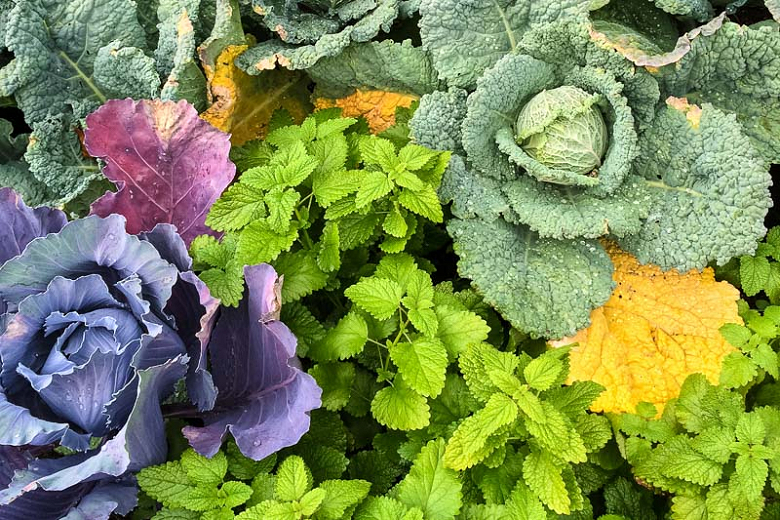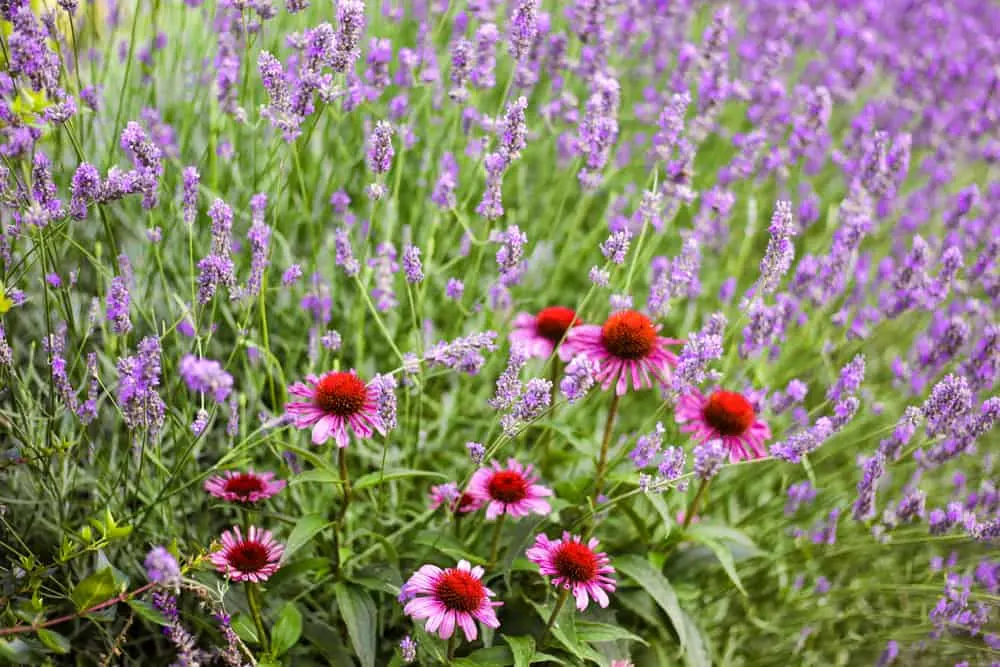The Ultimate Guide To Companion Planting With Mint
The Ultimate Guide to Companion Planting with Mint
Mint is a versatile herb that can be used in a variety of dishes, teas, and other beverages. It's also a great companion plant for other herbs and vegetables.
In this guide, we'll discuss the benefits of companion planting with mint, as well as some of the best plants to grow with it. We'll also cover some of the things to avoid when companion planting with mint.
Benefits of Companion Planting with Mint
There are many benefits to companion planting with mint. Here are a few of the most notable:
- Mint can repel pests. The strong scent of mint can deter a variety of pests, including aphids, cabbage moths, carrot root flies, and spider mites.
- Mint can attract beneficial insects. The scent of mint can also attract beneficial insects, such as ladybugs and lacewings, which help to control pests.
- Mint can improve the flavor of other plants. The strong flavor of mint can enhance the flavor of other plants, such as tomatoes, carrots, and cucumbers.
- Mint can improve the soil. Mint is a nitrogen-fixing plant, which means that it helps to improve the nitrogen content of the soil. This can benefit other plants in the garden.
Best Plants to Grow with Mint
There are many different plants that can be grown with mint. Here are a few of the best:
- Carrots. Mint helps to deter the carrot root fly, which is a common pest of carrots.
- Cabbage. Mint helps to repel cabbage moths, which can damage cabbage plants.
- Peas. Mint helps to repel aphids, which can be a problem for peas.
- Tomatoes. Mint helps to attract ladybugs and lacewings, which help to control pests that can damage tomatoes.
- Herbs. Mint can be grown with many other herbs, such as basil, oregano, and rosemary. This helps to create a fragrant and pest-free garden.
Things to Avoid When Companion Planting with Mint
There are a few things to avoid when companion planting with mint. These include:
- Other mint varieties. Mint is a very aggressive plant, and it can quickly take over a garden bed if it's not contained. It's best to avoid planting different varieties of mint together.
- Lavender. Lavender is a sensitive plant, and it can be damaged by the strong scent of mint.
- Strawberries. Mint can stunt the growth of strawberries.
Conclusion
Mint is a great companion plant for many different herbs and vegetables. By planting mint with the right plants, you can help to deter pests, improve the flavor of your crops, and improve the overall health of your garden.
Mint is a versatile herb that can be used in a variety of dishes, but it's also a great companion plant for other vegetables. The strong scent of mint can help to repel pests, attract beneficial insects, and improve the flavor of nearby plants.
Some of the best companion plants for mint include:
- Brassicas: Cauliflower, cabbage, broccoli, brussels sprouts, and kale all benefit from the pest-repelling qualities of mint.
- Carrots: The strong scent of mint can help to deter the carrot root fly, which can be a major pest for carrot growers.
- Marigolds: Marigolds are another great companion plant for mint, as they help to attract beneficial insects that prey on pests.
- Onions: The strong scent of mint can help to camouflage the scent of ripe onions from onion pests, such as the onion fly.
- Peas and beans: Mint can help to deter aphids and other pests from peas and beans.
If you're looking for more information about companion planting with mint, I recommend visiting Gardenia Inspiration. This website provides a comprehensive list of companion plants for mint, as well as tips on how to plant and care for mint in your garden.
FAQ of companion plant with mint
Q: What are the best companion plants for mint?
A: Mint is a versatile herb that can be paired with a variety of other plants. Some of the best companion plants for mint include:
- Carrots: Mint helps to repel carrot root flies, which can be a major pest for carrots.
- Tomatoes: Mint helps to improve the flavor of tomatoes and can also help to deter pests.
- Beans: Mint helps to protect beans from pests such as aphids and beetles.
- Marigolds: Marigolds help to attract beneficial insects that prey on pests, which can help to keep your mint plants healthy.
- Cabbage: Mint helps to repel cabbage moths and other pests that can damage cabbage plants.
Q: What are some plants that should not be planted near mint?
A: There are a few plants that should not be planted near mint, as they can be adversely affected by its strong growth. These plants include:
- Parsley: Mint can stunt the growth of parsley.
- Chamomile: Mint can suppress the growth of chamomile.
- Dill: Mint can compete with dill for water and nutrients.
- Basil: Mint can cross-pollinate with basil, which can alter the flavor of the basil.
Q: Can I plant different varieties of mint together?
A: It is not recommended to plant different varieties of mint together, as they can cross-pollinate and lose their individual scent and flavor. It is best to plant each variety of mint in its own pot or bed.
Q: How do I control mint's aggressive growth?
A: Mint is a very vigorous grower, so it is important to control its growth if you do not want it to take over your garden. Here are a few tips for controlling mint's growth:
- Plant mint in a pot or raised bed: This will help to contain its growth.
- Mulch around the mint plant: This will help to suppress weeds and keep the soil moist.
- Prune the mint plant regularly: This will help to keep it compact and prevent it from spreading.
- Divide the mint plant every few years: This will help to rejuvenate the plant and prevent it from becoming overcrowded.
Q: What are some other benefits of companion planting with mint?
A: In addition to deterring pests, mint can also attract beneficial insects, improve the flavor of other plants, and help to improve soil quality. For example, mint can attract pollinators such as bees and butterflies, which can help to increase the yield of your garden. Mint can also help to improve the flavor of tomatoes, carrots, and other vegetables. Additionally, mint can help to improve soil quality by suppressing the growth of weeds and adding nutrients to the soil.
Image of companion plant with mint
5 different images of companion plants with mint from Pinterest:
- Mint and tomatoes: Mint's strong aroma will keep pests away from tomatoes, such as aphids, spider mites, and whiteflies.

- Mint and carrots: The strong aroma of mint will also deter carrot flies, which can damage carrot roots.

- Mint and beans: Mint can help to improve the flavor of beans, and it can also help to repel bean beetles.

- Mint and cabbage: Mint is a good companion plant for cabbage, broccoli, and other brassicas, as it can help to repel cabbage moths and other pests.

- Mint and lavender: Mint and lavender are both fragrant plants, and they can help to deter pests from each other.

Post a Comment for "The Ultimate Guide To Companion Planting With Mint"